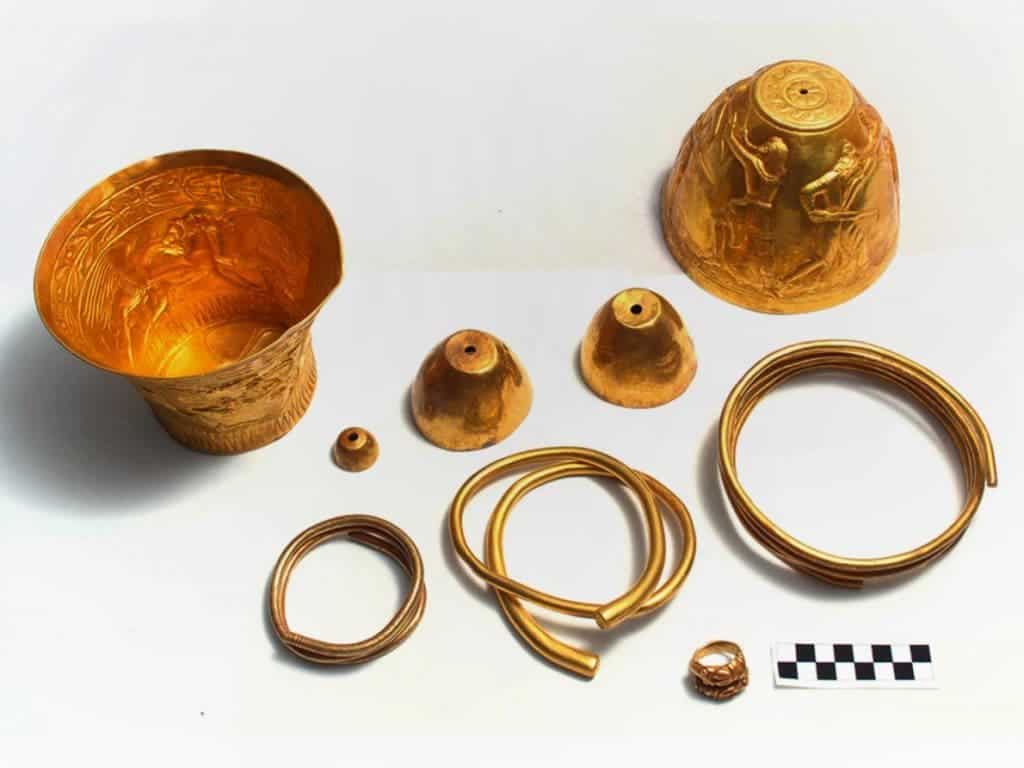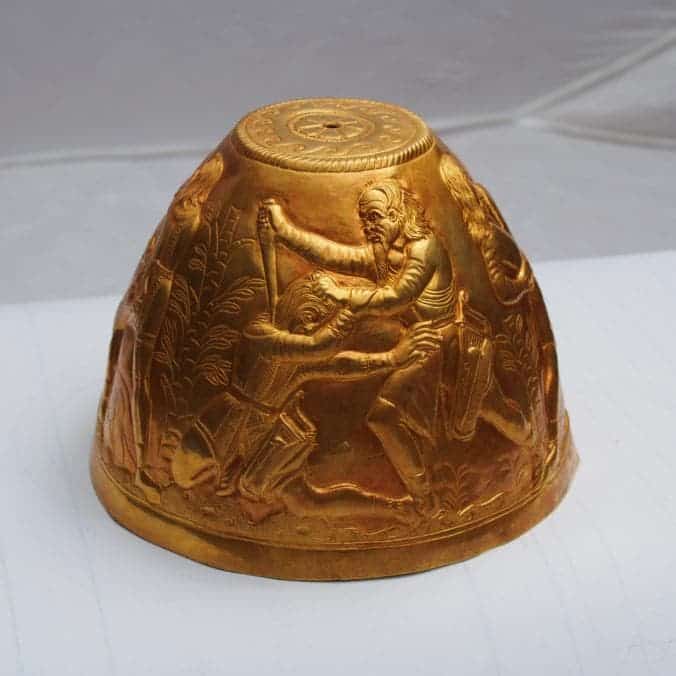Two bongs for cannabis and opium used by Scythian tribal chieftains have been discovered by archaeologists in Russia. But unlike modern bongs, these ones are made of solid gold.

“It’s a once-in-a-century discovery,” says Anton Gass, an archaeologist at the Prussian Cultural Heritage Foundation in Berlin. “These are among the finest objects we know from the region.”
Drugs and Warfare
A bong, a bong, my kingdom for a bong – not something that early Scythians likely said, but these bongs were indeed fit for a king. Tests have confirmed that the two objects, made from solid gold, were used for smoking cannabis and opium.
Scythians were a large, nomadic group of Iranian nomads inhabiting vast territories in central Eurasian steppes from about the 9th century BC up until the 4th century AD. They were described by numerous literate populations as a warrior race, perhaps the earliest population to master mounted warfare. But like almost all warrior people, they also liked to unwind and have a good time. The famous Greek historian Herodotus wrote:
‘Scythians used a plant to produce smoke that no Grecian vapour-bath can surpass which made them shout aloud.’
So archaeologists weren’t necessarily surprised when they discovered this trove; some historians have long proposed that Scythians smoked, and sometimes brewed, a strong concoction of cannabis and opium, either to alter their state of mind before battle, or simply to party and celebrate after battle.
A Spectacular Site
Scythians ruled the vastlands of eastern Europe for almost a thousand years, but they left no major cities or settlements behind, so archaeologists are now having a hard time understanding exactly how their societies were built. However, they did leave behind massive grave mounds, called kurgans, everywhere from Mongolia to the Black Sea.
Kurgan is the Slavic word for tumulus, a type of burial mound or barrow, heaped over a burial chamber, often of wood. Kurgans were built from the Bronze Age to the Middle Age, from Central Europe to the Baikal Lake in Asia. Of course, Scythian kurgans are among the most spectacular ones, but this one clearly stands out. According to National Geographic, digs uncovered two bucket-shaped gold vessels, each placed upside down. Inside were three gold cups, a heavy gold finger ring, two neck rings, and a gold bracelet. In total, the artefacts weighed 3.2 kilograms – seven pounds of solid gold.

PHOTOGRAPH BY ANDREI BELINSKY
“It was definitely a surprise for us,” Belinski says. “We weren’t expecting to find anything like this.”
Upon closer inspection, scientists noticed a dark residue on the artefacts; when they tested it, results came positive for opium and cannabis.
“That both drugs were being used simultaneously is beyond doubt,” Gass says.
Another thing stood out from the vessels – the decorations; one vessel shows an old, bearded man slaying young warriors while the other is covered with violent scenes with mythological creatures: a gryffon tearing apart a horse in a bleak landscape, something which Belinski believes represents the Scythian underworld. The level of detail is absolutely stunning.
“I’ve never seen such a detailed representation of the clothing and weaponry of the Scythians,” says Belinski. “It’s so detailed you can see how the clothing was sewn.”
These exciting discoveries have motivated scientists to go to the field again, because for all their awesomeness, these golden artefacts pose even more questions than they answer.
“It’s like a detective investigation. We don’t understand it all, not immediately,” says Gass. “We need to keep digging.”
Was this helpful?



